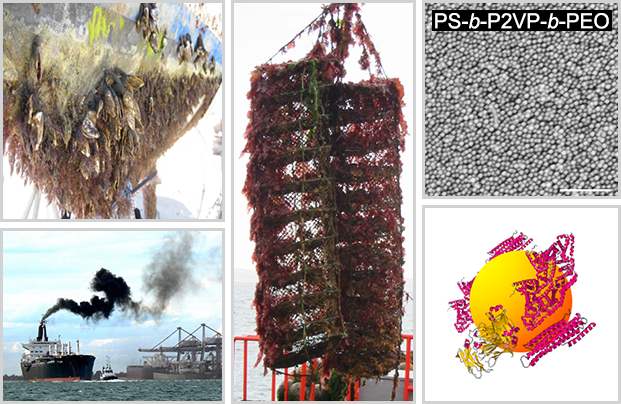Centre for Biofouling Control
Biofouling limits the performance of man-made materials. The examples of this range from ship hulls and aquaculture nets to biomedical devices. Better solutions are needed, which will come from developing better materials and a better understanding of biofouling growth. Materials that are more effective at controlling biofouling are required and understanding the development of biofilms is a key step.
The Centre for Biofouling Control brings together researchers who face similar biofouling problems in completely different disciplines with the tools they need to solve those problems. Our overall goal is to enable the development of a biofouling model for proteins, biofilms, and macrofoulers and, just as importantly, a way to inhibit biofouling through the knowledge provided by the model.
The Centre houses the following instrumentation: optical microscopes, particle tracking system, quartz crystal microbalance, ultraviolet–visible spectrometer, nanoscale infrared imaging system, atomic force microscope system, Raman spectrometer, cell culture station, and synthetic station.
The Centre is located in Room 140 at the Lash Miller Chemical Laboratories, University of Toronto. For additional information, please contact us.

Centre for Biofouling Control
Biofouling limits the performance of man-made materials. The examples of this range from ship hulls and aquaculture nets to biomedical devices. Better solutions are needed, which will come from developing better materials and a better understanding of biofouling growth. Materials that are more effective at controlling biofouling are required and understanding the development of biofilms is a key step.
The Centre for Biofouling Control brings together researchers who face similar biofouling problems in completely different disciplines with the tools they need to solve those problems. Our overall goal is to enable the development of a biofouling model for proteins, biofilms, and macrofoulers and, just as importantly, a way to inhibit biofouling through the knowledge provided by the model.
The Centre houses the following instrumentation: optical microscopes, particle tracking system, quartz crystal microbalance, ultraviolet–visible spectrometer, nanoscale infrared imaging system, atomic force microscope system, Raman spectrometer, cell culture station, and synthetic station.
The Centre is located in Room 140 at the Lash Miller Chemical Laboratories, University of Toronto. For additional information, please contact us.

